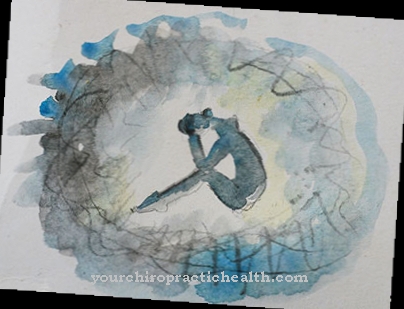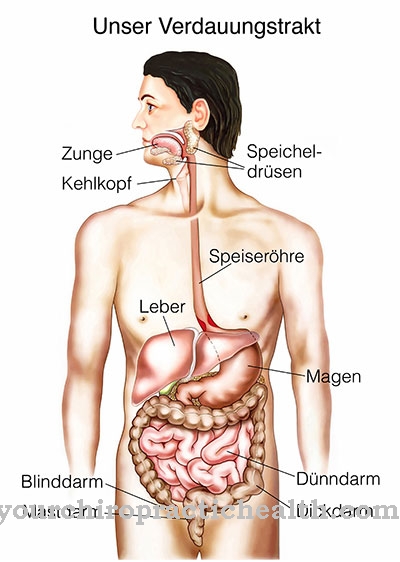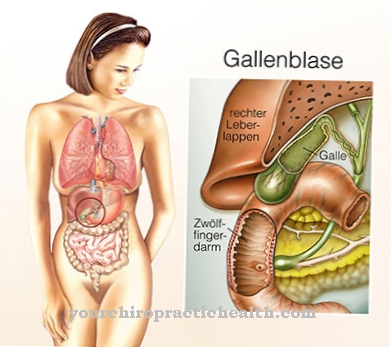Multiple trauma means multiple injury. By definition, it is a serious, life-threatening injury. There is a risk of cardiovascular failure due to shock or traumatic brain injury in multiple trauma.
What is a multiple trauma?

© motortion - stock.adobe.com
Multiple trauma (Plural: polytraumata) is a term used in emergency medicine. The translation of the Greek word compound is "multiple violation". This always means a serious injury, consisting of at least 2 injuries to a patient either:
- on at least 2 body regions or
- different types of injuries to one or more parts of the body.
By definition, a multiple trauma is a condition with an acute danger to life. The threat to life can come from just one or more injuries at the same time. It is also characterized by a volume deficiency shock, which is caused by external or internal bleeding.
Scaled calculation systems exist for assessment and classification in order to determine the severity of an existing multiple trauma. For example, the “Injurity Severity Score” (GCS) is one of the most common scale systems for classifying multiple trauma.
causes
A Multiple trauma is the result of violence. In most cases, the serious injuries occur in the context of traffic accidents, but work accidents also often cause multiple trauma. Furthermore, violent crimes or suicide attempts such as falling windows are the cause of multiple injuries.
In the context of accidents, acute illnesses also play a role, which may be triggers but are often misunderstood.In a traffic accident, for example, a stroke can be the cause, which initially remains undetected because the symptoms of the multiple trauma superimpose the syndrome of apoplexy.
To make matters worse - also causing accidents - intoxication with alcohol or drugs. About 1% of all emergency patients with injuries suffer from multiple trauma.
Symptoms, ailments & signs
A multiple trauma can have many different symptoms. All of these symptoms can be equated with injuries, at least two of which must exist to define multiple trauma. Furthermore, a multiple trauma usually also means that the person concerned is in a state of shock. Most often, unconsciousness occurs.
Typical symptoms of multiple trauma are, for example, a circulatory shock, a severe traumatic brain injury or a spinal column injury. These ailments are some of the most severe in such a trauma. Furthermore, ribs, injuries to the extremities, internal bleeding, failure of individual organs or large wounds can occur. Furthermore, the injuries are further classified. Gunshot wounds or very severe bruises are possible symptoms of multiple trauma. In most cases there is severe blood loss.
The rule is that the more injuries have occurred, the more severe the trauma. Correspondingly, the survival rate decreases with the severity and complexity of the injuries. The first days after the occurrence of the trauma also harbor an increased risk of kidney weakness or fat embolism. For those affected, multiple trauma usually means complete inability to act. Some people also fall into a coma as a result of such trauma.
Diagnosis & course
A Multiple trauma can often be recognized by the rescue service based on the location and the condition of the patient. Diagnostically, the focus is now on checking the vital signs. Blood pressure, ECG and breathability are essential factors in determining whether the injured person can be transported.
The emergency doctor must also choose the means of transport and, in severe cases, request a helicopter. The individual injuries can only be precisely determined in the clinic. An ultrasound examination provides the first findings on injuries to the internal organs, including the chest.
In addition, full-body computed tomography is performed today. The classic X-ray can also contribute to the diagnosis, but often cannot be made depending on the condition of the patient with multiple trauma.
Complications
By definition, multiple trauma is a condition in which the patient has suffered several serious injuries at the same time, at least one of which is life-threatening. The specific complications that can arise depends on the type of injury and how the accident happened.
Patients who have broken both arms and legs at the same time are largely immobile for months and require 100 percent care. If the person concerned is conscious, he suffers from enormous physical pain, which cannot always be completely suppressed even with medication. For many of those affected, the total helplessness that sets in, especially when both arms are broken, is associated with great psychological stress.
The nursing measures, especially in the case of intimate activities, are often perceived as humiliating. If there is an injury to the spine combined with paralysis of the extremities, patients usually feel no or significantly less pain because the nerve connection to the brain is interrupted.
The possibility of permanent paralysis up to the complete loss of the ability to move the limbs puts an enormous emotional strain on those affected. Even with injuries that are not as serious, those affected face months of convalescence, with permanent damage being very likely.
When should you go to the doctor?
If there are irregularities or changes in the state of health due to an external influence on the body of the person concerned, a doctor should be consulted to clarify the symptoms. In acute situations, an ambulance service is required to provide first aid. Those present are requested to provide immediate measures and first aid until the emergency doctor arrives. Loss of consciousness, impaired orientation or abnormal memory function should be examined and treated. Headaches, severe blood loss and pain in the body must be clarified by a doctor. If the body is deformed, the musculoskeletal system is restricted or open wounds can be identified, the person concerned needs help.
In the case of blunt injuries, a violent blow to the head, as well as severe nausea with vomiting, a doctor's visit is required. The multiple trauma usually occurs after a serious fall, an accident or after being subjected to violence. Consult a doctor so that injuries are documented and treated. Bruises, injuries to the limbs and a hunched posture indicate irregularities that should be presented to a doctor. If internal bleeding occurs, breathing is blocked, or in a state of shock, immediate help is needed. Sudden discoloration of the skin, an internal weakness and misalignment of the bones are signs of a disease and must be treated medically.
Treatment & Therapy
At the Multiple trauma First aiders are very important. He usually not only alerts the emergency services, but should also carry out acute life-saving measures. These immediate interventions are:
- the stable side position when unconscious,
- cardiopulmonary resuscitation in cardiac arrest by mouth-to-mouth
or mouth-to-nose resuscitation and chest compressions as well
- hemostasis of external injuries through temporary wound closure
The rescue team continues the resuscitation with technical methods. The aim is to stabilize the patient, who must be brought into a transportable condition. To combat the volume deficiency shock, infusions are given, which are supplemented by blood transfusions in the clinic.
The first thing the trauma surgeon will do is to surgically stop the bleeding. In the course of treatment, priority is always given to the acutely life-threatening injury, so the focus is specifically on the condition of the internal organs. Treatment of a traumatic brain injury and fractures of the spine and large bones is also urgent. Because fractures of the pelvis or thigh can lead to life-threatening blood loss.
Smaller injuries to the skeletal apparatus are initially only treated temporarily. In general, the principle “treat first what kills first” applies. As a rule, treatment in the emergency room and the operating room is followed by intensive medical monitoring with airway management. Because the patients are often in a coma, caused by multiple trauma.
prevention
Multiple trauma and prevention is an issue of accident prevention. Safety regulations at the workplace, professional protective clothing and the observance of self-protection should never be out of sight. Since most polytrauma are caused by traffic accidents, the greatest prophylaxis potential lies here too. Many road accidents result from non-compliance with the simplest driving school rules. Those who pay attention to them help to avoid multiple trauma.
Aftercare
The follow-up measures for a multiple trauma can be very different. Depending on which injuries were present, either no follow-up care at all may be required or extensive measures must be taken. In the treatment of broken bones, the affected joints are immobilized, which means that the muscles that are not being used are severely reduced.
Physiotherapy ensures that the joints are mobilized again and targeted muscle building takes place. If certain functions of the body could not be restored despite the treatment, the aftercare aims to ensure that the patient has the highest possible quality of life despite his or her limitations. If, for example, amputations have caused disabilities, training in how to use a prosthesis is part of the follow-up care.
Close follow-up care is required if the affected organs can no longer function at all or if they can no longer fully function. Training the patient helps him to cope better with the restrictions. In this way, those affected can cope better with the new situation after a multiple trauma and remain as independent as possible. A multiple trauma often also has psychological consequences. These are not always recognized immediately and should also be taken into account with good follow-up care.
You can do that yourself
Those who have survived a multiple trauma will possibly remain “traumatized” for a long time afterwards. It often takes years for the injuries, some of which are life-threatening, to heal. Medically, perhaps everything necessary for the patient has been done - but what about his psyche?
Clinics that belong to the TraumaNetwork offer special consultation hours for polytrauma patients. Those affected will find contact persons and psychologists here who can provide assistance in dealing with this life crisis beyond medical issues. It is also recommended to join a self-help group. You can find them in all major cities. Anyone who lives in the country and is not able to regularly visit a distant group should definitely seek psychological support.
In addition, it is important to maintain friendships and not to withdraw. The feeling of being badly injured and helpless can be frightening beyond the actual injuries. Here it is important to actively counteract fear and to do as many things as possible that are good for the soul. This can be just as much a wellness holiday as a long, extensive bath.



























